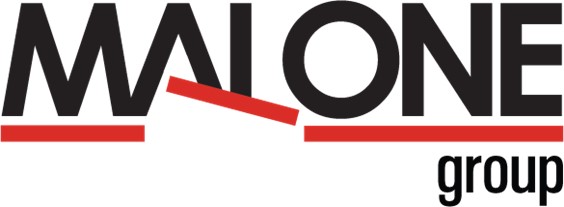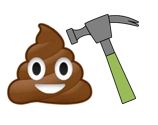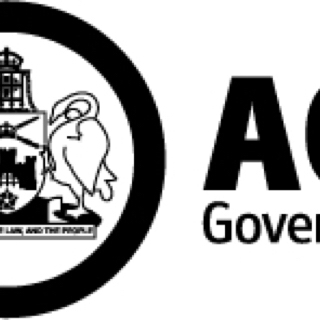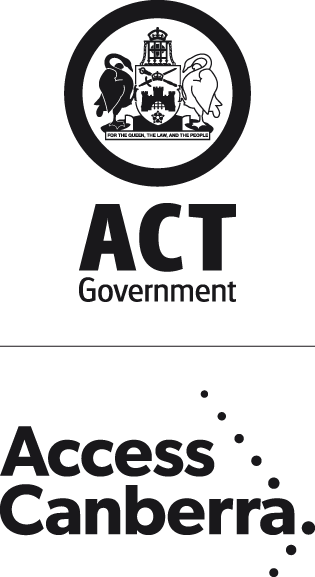Title Page
-
Site conducted
-
Conducted on
-
Prepared by
-
Location
Documentation
-
Is the construction phase plan on site and up to date?
-
Is the F10 clearly displayed?
-
Is there a copy of the HSE notice “what you should know” displayed?
-
Have emergency procedures been developed?
-
Is a first aid poster displayed?
-
Is there an accident book or online reporting system?
-
Are all visitors/ workers to site inducted
-
Is there a booking in book?
-
Are risk assessments and method statements available and suitable for the tasks?
-
Are permit to work systems in place and used?
-
Are site and service drawings available and up to date?
-
Are training records available?
-
Have toolbox talks been undertaken
Sub-contractor management
-
Is there a pre-qualifying competence assessment procedure in place for procuring, managing and monitoring Sub-contractors?
Emergency procedures
-
Are people aware of the emergency procedures?
-
Is there a means of raising the alarm?
-
Have they been tested and recorded?
-
Are there adequate and safe escape routes and are they clear?
Safe places of work
-
Can everyone on the project reach their place of work safely, e.g. are roads, gangways, staircases, ladders and scaffolds in good condition?
-
Are there guardrails or equivalent protection to stop falls from open edges on scaffolds, MEWPs, buildings, excavations etc?
-
Are all working areas and walkways level and free from trip hazards, obstructions such as stored materials and waste?
-
Is the there suitable security, signage and lighting?
Scaffolds
-
Are all scaffolds and work platforms erected, altered and dismantled by competent persons?
-
Does the scaffold have a scafftag or clear notice of incomplete (do not use)scaffold?
-
Are there handover certificates for all scaffolds and work platforms?
-
Is there safe access to scaffold? (Ladder must extend 1m above platform)
-
Have all uprights been provided with base plates or prevented from some other way from slipping or sinking
-
Are all uprights, ledgers, braces, and struts in position?
-
Is the scaffolding secured to the building or have sufficient kentledge to prevent collapse?
-
Are there adequate guardrails, intermediate rails and toe boards?
-
Are adequate precautions in place to protect the public e.g. double boarded with sheeting, foam on uprights?
-
Has the scaffold been designed and constructed to cope with the materials stored on it and are these evenly distributed?
-
Does a competent person inspect the scaffold weekly, after it has been altered or damaged or after extreme weather?
Ladders
-
Are ladders the right means of access for this project or job?
-
Is there a ladder log or inspection scheme on site?
-
Are ladders used only for short term works?
Roof work
-
Are there enough barriers and edge protection to prevent falling people or materials?
-
Are harnesses available for the workforce if required?
-
During industrial roofing are precautions taken to stop people falling from the leading edge or from fragile or partially fixed sheets?
-
Do the roof battens provide safe hand and foot holds? If not are crawling ladders or boards provided and used?
-
Are crawling boards provided where work on fragile materials cannot be avoided?
-
Are people excluded from the area below and suitable barriers in place?
-
Are fall protection safety nets in place and are they inspected daily?
Excavations
-
Is an adequate supply of timber, trench sheets, props or other supporting material made available before work begins? Is it strong enough to support the sides?
-
Is there a safe method for installing the supports that doesn’t involve exposing people to an unsupported trench?
-
If the sides of the excavation are sloped or battered, is the angle of batter sufficient to prevent collapse?
-
Is there safe access to the excavation e.g. by a sufficiently long ladder?
-
Are there guardrails or equivalent protection to stop people falling in?
-
Are properly secured stop blocks provided to prevent tipping vehicles falling in?
-
Does the excavation have no effect on the stability of neighbouring structures
-
Are materials, spoil or plant stored away from the edge of excavations to reduce the likelihood of a collapse of the side?
-
Is the excavation inspected by a competent person at the start of every shift and after any accidental collapse or event likely to have affected its stability?
Manual handling
-
Has the risk of manual handling been assessed?
-
Are hoists, telehandlers, wheel barrows and other plant and equipment used to avoid manual handling e.g. heavy blocks, lintels etc?
Hoists
-
Is the hoist protected by a substantial enclosure to prevent someone from being struck by any moving part of the hoist or falling down the hoist way?
-
Are gates provided at all landings, including ground level?
-
Are gates kept shut except when the platform is at the landing
-
Are the controls arranged so that the hoist can be operated from one position only?
-
Are the hoist operators trained and competent?
-
Is the hoists safe working load clearly marked?
-
If the hoist for materials only, is this clearly signed?
-
Is the hoist inspected weekly and thoroughly inspected every 6 months?
Cranes and lifting appliances
-
Is the mobile or static crane working on a firm level base?
-
Are the safe working loads and corresponding radii known and considered before any lifting begins?
-
Are all operators trained and competent?
-
Has the banksman/slinger/signaller been trained to give signals and to attach loads correctly?
-
Are cranes inspected weekly, and thoroughly examined every 12 months by a competent person?
-
Does the crane have a current test certificate?
Plant and machinery
-
Is the right plant and machinery being used for the job? <br>
-
Are all-dangerous parts guarded, e.g. exposed gears, chain drives, projecting engine shafts? <br>
-
Is the machinery maintained in good repair and are all safety devices operating correctly? <br>
-
Are all operators trained and competent? <br>
-
Are pre-use and weekly checks being carried out?
Traffic and vehicles
-
Have separate pedestrian, vehicle access points and routes around the site been provided? If not, are vehicles and pedestrians kept separate wherever possible? <br>
-
Have one-way systems or turning points been provided to minimise the need for reversing? <br>
-
Where vehicles have to reverse, are they controlled by properly trained banksman? <br>
-
Are vehicles fitted with reversing warning systems to warn other workers? <br>
-
Have drivers received proper training? <br>
-
Are vehicles securely loaded? <br>
-
Are passengers prevented from riding in dangerous positions? <br>
-
Do vehicle drivers know where to park in case of a Fire or other emergency? <br>
Fire
-
Is the quantity of flammable material on site kept to a minimum? <br>
-
Are there provided proper storage areas for flammable liquids and gases, e.g. LPG and acetylene? (secure and segregated) <br>
-
Are containers and cylinders returned to these stores at the end of the shift? <br>
-
If liquids are transferred from their original containers are the new containers suitable for flammable materials? <br>
-
Is smoking banned in areas where gases or flammable liquids are stored and used? Are other ignition sources also prohibited? <br>
-
Are the cylinders and associated equipment in good condition? <br>
-
Are cylinders stored outside? <br>
-
Is flammable and combustible waste removed regularly? <br>
-
Are the right number and type of fire extinguishers available and accessible? <br>
Hazardous substances
-
Are chemicals stored correctly?
-
Have all harmful materials been considered, e.g. asbestos, lead, solvents, paints etc and have they been identified properly? <br>
-
Have the risks to everyone who might be exposed to these substances been assessed? <br>
-
Are safety data sheets available?
-
Have precautions been identified and put in place, e.g. is protective equipment provided and used; are workers and others who are not protected kept away from exposure? <br>
Noise
-
Are breakers and other plant or machinery fitted with silencers? <br>
-
Are barriers erected to reduce the spread of noise? <br>
-
Is work sequenced to minimise the number of people exposed to noise? <br>
-
Are others not involved in the work kept away? <br>
-
Is suitable hearing protection provided and worn in noisy areas? <br>
Welfare
-
Have suitable and sufficient numbers of toilets been provided and are they kept clean? <br>
-
Are there clean washbasins, warm water, soap and towels? <br>
-
Is suitable clothing provided for those who have to work in wet, dirty or otherwise adverse conditions? <br>
-
Are there facilities for changing, drying and storing clothes? <br>
-
Is drinking water provided? <br>
-
Is there a site facility / accommodation where workers can sit, make tea and prepare food? <br>
-
Is there adequate first aid provision? <br>
-
Are welfare facilities easily and safely accessible to all who need to use them? <br>
Personal protective equipment
-
Has adequate personal protective equipment, e.g. hard hats, safety boots, gloves, goggles, and dust masks been provided? <br>
-
Is the equipment in good condition and worn by all who need it? <br>
-
Has specialist PPE had the relevant statutory inspections e.g. FPE?
Electricity
-
Is the supply voltage for tools and equipment the lowest necessary for the job? (Battery or 110v or lower) <br>
-
Where mains voltage has to be used, are trip devices, e.g. residual current devices (RCDs) provided for all equipment? <br>
-
Are RCDs protected from damage, dust and dampness and checked daily by users? <br>
-
Are cables and leads protected from damage by sheathing, protective enclosures or by positioning away from causes of damage? <br>
-
Are all connections to the system properly made and are suitable plugs used? <br>
-
Is there an appropriate system of user checks, formal visual examinations by site managers and combined inspection and test by competent persons for all tools and equipment? <br>
-
Are scaffolders, roofers etc or cranes or other plant, working near or under overhead lines? Has the electricity supply been turned off, or have other precautions, such as 'goal posts' or taped markers been provided to prevent them contacting the lines? <br>
-
Have underground electricity cables been located (with a cable locator and cable plans), marked, and precautions for safe digging been taken? <br>
Protecting the public
-
Is the site suitably and sufficiently signed to warn the public of the dangers of a construction site? <br>
-
Are the vehicle entrances to the site safe and are they adequately signed? <br>
-
Are the public fenced off or otherwise protected from the work? <br>
-
Are delivery vehicles adequately controlled whilst on site? <br>
-
Are the suitable arrangements for the parking of construction site workers vehicles? <br>
When work has stopped for the day
-
Are the gates secured? <br>
-
Is the perimeter fencing secure and undamaged? <br>
-
Are all ladders removed or their rungs boarded so that they cannot be used? <br>
-
Are excavations and openings securely covered or fenced off? <br>
-
Is all plant immobilised to prevent unauthorised use? <br>
-
Are bricks and materials safely stacked? <br>
-
Are flammable or dangerous substances locked away in secure storage places? <br>
Protecting the environment
-
Are statutory nuisance control measures implemented for Dust emission? <br>
-
Are statutory nuisance control measures implemented for Noise emission? <br>
-
Are statutory nuisance control measures implemented for Smoke, Fume, Gas, or Odour emission? <br>
-
Is general waste on site stored correctly? <br>
-
Is hazardous waste on site stored correctly, and is there an inventory? <br>
-
Has a registered carrier been appointed to remove waste? <br>
-
Is receipt of waste transfer note held on site? <br>
-
Is the site registered as a hazardous waste producer? <br>
-
Are hazardous waste consignment notes kept on site? <br>
-
Are there written instructions for storing and disposing of hazardous waste? <br>
-
Are there procedures for dealing with spills of hazardous materials (These should include instructions on what to do in the event of a spill, the type of personal protection equipment required and the correct route for disposing of contaminated clean-up materials.)? <br>
-
Is washing out of concrete / mortar plant controlled? <br>
-
Is waste water handled to prevent contamination to water course? <br>
-
Is filling of plant and tanks done correctly to minimise potential for environmental incident? <br>
-
Are hazardous substances stored correctly and made secure? <br>
-
Are suitable emergency arrangements in place to control spillage e.g. absorbent materials? <br>
-
Is effluent connected and discharged correctly? <br>
-
Have controls been implemented to ensure contaminants do not reach soil or controlled waters? <br>
-
Have all applicable preservation and conservation requirements been implemented? <br>
-
Have planning requirements been implemented and followed? <br>
-
Is appropriate signage and marking in place relating to activities taken place on site? <br>
-
Is housekeeping maintained to reduce visual environmental pollution? <br>













